The historic war between South Yemen and North Yemen has resumed, and the country is once again at risk of secession. However, this time around, the threat of secession is felt more than ever, a threat that will stir the Middle East apart from Yemen and the Arabian Peninsula.
ACTIVE GROUPS IN THE YEMENI WAR AND THEIR RELATIONSHIP WITH FOREIGN COUNTRIES
The Houthi movement or Ansar Allah Zaydi Shiites make up 40% of the Yemeni population, and play an important role in the country. Throughout history, these Shiites have lived peacefully alongside the Yemeni Sunnis. A large population of Yemeni Shiites belongs to the Hamdan tribe (Hamdanids), the most well known of which are the Houthis. What is now known as the Ansar Allah movement is the political and military branch of the Houthis. After Saudi Arabia invaded Yemen, Ansar Allah took on a more prominent role, with other groups eventually joining as well. Although Yemeni Shiites have joined Ansar Allah, the Houthis remain in command of these forces.
The Houthis began their political activities in 1986 with the formation of a group called “the Believing Youth.” The Houthi leaders founded the group after getting acquainted with the ideas of Ayatollah Sayyid Ruhollah Khomeini, Iran’s leader. Later, they changed their name to Ansar Allah. The group officially launched its military operations in 2004.
1st time Yemen's Houthi leader addresses relationship with Iran:"We take no single order from Iran.Our position against Saudi wasn't compelled by Iran but rather by the aggression on us".He said recent delegation to Iran was to restore diplomatic relationshttps://t.co/23rF9h1svZ
— Shuaib M. Almosawa (@Shuaibalmosawa) August 17, 2019
Iran’s Shiite ideas and the 1979 Islamic Revolution greatly influenced the Houthis and Ansar Allah. The slogans of Ansar Allah are also very close to those of the Iranian government. Iran’s political support for Ansar Allah cannot be ignored; however, no evidence has been provided by any country about Iran’s military support for Ansar Allah. Thus, like Lebanon’s Hezbollah, Ansar Allah cannot be considered part of Iran’s international forces; they should be considered part of Iranian hegemony.
THE SUPREME POLITICAL COUNCIL
The Supreme Political Council should be considered the same government appointed by Ansar Allah to take charge of Yemen’s affairs. The council is similar to a government, and its chairman, Mahdi al-Mashat, is Yemen’s president. The council is trying to put an end to the turmoil in Yemeni domestic politics, which was the result of the war with Saudi Arabia.
Ansar Allah has close relations with Iran, which has also endorsed the council.
THE YEMENI CONGREGATION FOR REFORM OR AL-ISLAH
Another important group in Yemen is Al-Islah. Like Ansar Allah, this group has been on the list of terrorist organizations since 1995 thanks to the efforts of Saudi Arabia and the United Arab Emirates (UAE).
UAE and Yemen's al-Islah: Meeting of enemies doesn't mean peace https://t.co/bIZ7ii9jSL
— Middle East Eye (@MiddleEastEye) November 17, 2018
However, over the last few years, Mohammad bin Salman and Mohammed bin Zayed Al Nahyan have been meeting with Al-Islah commanders. These meetings are likely aimed at bringing the group in line with the goals of Saudi Arabia and the UAE in Yemen. Nonetheless, at present, the group continues to pursue goals that are directly opposed to their interests.
Since the group is influenced by the ideas of The Society of the Muslim Brothers and opposed to Wahhabism, it has naturally developed close ties with Turkey and Qatar. However, Al-Islah is not under the direct command of Ankara or Doha.
ANSAR AL-SHARIA
Ansar al-Sharia, the Yemeni branch of al-Qaeda, is one of the most dangerous branches of the terrorist organization. It operates in Saudi Arabia and Yemen, has been active since 2009 and has managed to seize control parts of large parts of the country, including areas of the Hadhramaut and Abyan provinces.
After the defeat of Ansar al-Sharia in the south, Ben Brik fled to Aden
In 2016, he was appointed Minister of State in the legitimate government of President Hadi, and after he decided to rebel, President Hadi dismissed him and referred him for investigation, in 2017.#Yemen pic.twitter.com/6qWAXxAn2r— رهــــــــف الــــ ســـــــلــمــا ن???????????????? (@Rahafslman5) December 6, 2019
Although the group is listed by the UAE as a terrorist organization, private military company soldiers led by the UAE have worked with with them in these provinces in their fight against the Hadi-led government.
The weapons used by Ansar al-Sharia were purchased by the UAE and Saudi Arabia from the United States… officials in Saudi Arabia, the UAE, and the United States claim they were unaware of the issue. Nonetheless, the fact that Ansar al-Sharia forces are in possession of these weapons indicates that at least one of the three countries has provided them to the terrorist group behind the scenes.
HADI-LED GOVERNMENT OR THE CABINET OF YEMEN
These forces are engaged in a military battle with the Yemeni people, directly under the command of Saudi Arabia, and are attempting to counter the popular protests against the Hadi-led government and recapture Sanaa. The UAE has also supported them at various points, although this support was never permanent.
In a ceremony attended by Yemen's President H.E Abd Rabbo Mansour Hadi, STC leader Aidarous Al Zoubeidi, and Abu Dhabi Crown Prince Sheikh Mohammed bin Zayed, HRH #Saudi Crown Prince oversees the signing of the Riyadh agreement. pic.twitter.com/dspCPcsNQ5
— Saudi Embassy USA (@SaudiEmbassyUSA) November 5, 2019
Since Mansur Hadi is an influential person in the Aden region, these forces have begun their activities in the area. After taking over Sanaa, their most important goal is to control Yemeni ports.
The Hadi-led government, on top of being supported by the Saudi-led coalition, also benefits from US intelligence assistance.
SOUTHERN TRANSITIONAL COUNCIL (STC)
The STC was been founded based on historical differences between North Yemen and South Yemen and enjoys the UAE’s support. It is generally active in Aden, Abyan, and Al-Mahrah provinces.
The people of Socotra marched this morning and said "Thank you UAE"
There are a number of rallies across the South "South Yemen" paying their gratitude for UAE's support in th fight against terrorism & providing humanatrian aids and reliefs as well as security.@STCSouthArabia pic.twitter.com/acaLhMQoYw
— STC UK Office (@STC_UK_Office) September 5, 2019
The UAE’s support for the group has made the STC an Abu Dhabi bargaining chip against Riyadh in the Yemeni crisis.
STATUS QUO ANALYSIS AND FORECASTS OF FIELD DEVELOPMENTS
There is a persistent gap in the goals and the strategy of the UAE and Saudi Arabia in Yemen. Having formed a coalition, the two countries have since launched a war against the Yemeni people– however, they now pursue entirely separate goals. Nevertheless, both of these countries still share the same ultimate goal, i.e., the disintegration of the Yemeni provinces and ultimately Yemen itself.
If that happens, the Hadhramaut province will be the first province broken up into two or three separate provinces.
At the beginning of 2019, the province was under the control of Ansar al-Sharia and the Hadi-led government. Following the clashes between Hadi-led government and STC forces in Aden and Al Hudaydah, a conflict also took place involving soldiers from Private military company, led by the UAE, in Hadhramaut province and Hadi-led government forces. As a result of these clashes, these forces took control of the eastern parts of the province.
The Governor of Hadramout needs as much power as he can to Hadramoutize all sectors there.Submission to Aldanboa(Hadi) and the other agendas that harm Hadramaut more than benefits will lead to a big failure .Maarib hand have to be cut if you want any security or economy stability pic.twitter.com/R4NMXbZSJS
— Salem Bayahya (@goldensla) December 4, 2019
Since then, as a result of an agreement between Saudi Arabia and the UAE, these areas have been restored to Hadi-led government forces.
The reason for the agreement between the two countries is not clear yet. Nevertheless, there are two different likely explanations:
-
Saudi Arabia has agreed to withdraw Hadi-led government forces from Port of Hudaydah in exchange for regaining control of Hadhramaut.
-
The UAE and Saudi Arabia intend to divide the province into three areas: 1) The Hadi-led government-controlled area in the western part 2) the Ansar al-Sharia-controlled area at the seat and 3) the STC-controlled area in the east.
Exploring the possibility of cooperation between the Houthis and Al-Islah, resolving disputes and overcoming the conflict between Shiites and Al-Islah followers in Yemen
Ansar Allah and Al-Islah have different ideologies but share common goals, including their efforts to push Saudi Arabian and Emarati forces from Yemeni territory, establish a popular government in Yemen, counter Wahhabism and fight terrorism.
The countries supporting these two groups, i.e., Iran, Turkey and Qatar, also have very close diplomatic relations. Together, they could form a powerful coalition against the UAE and Saudi Arabia. Accordingly, it is expected that the two groups will either form a coalition in the future or bring their goals closer together.
Neither Ansar Allah nor Al-Islah are purely religious groups; instead, they both represent different ethnicities who have lived peacefully together in Yemen for many years. In addition, the fact that both groups insist on nationalistic and unifying values suggests the possibility of them forming a coalition.







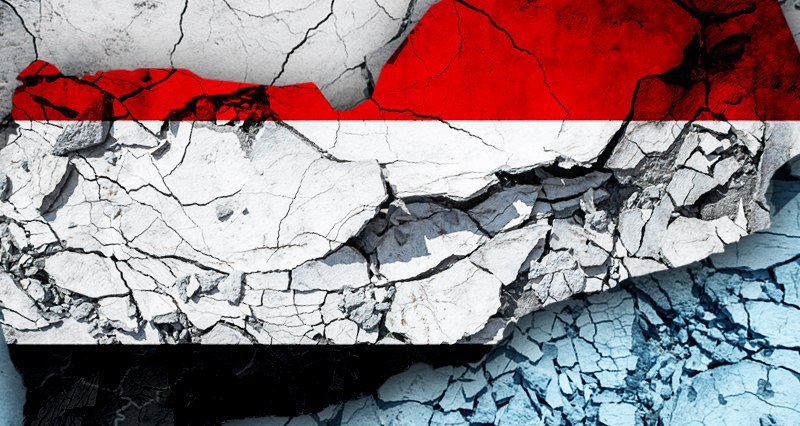

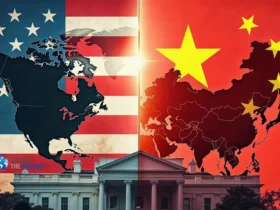
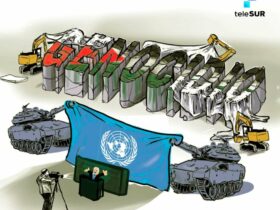
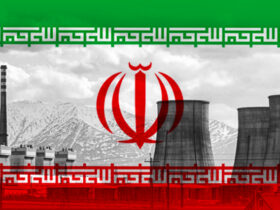

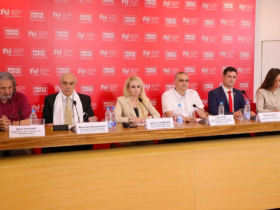
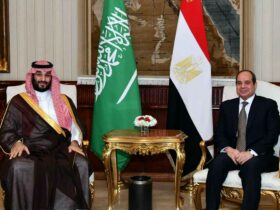
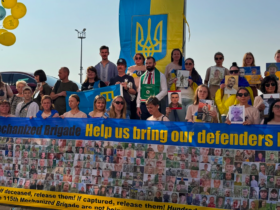

Leave a Reply